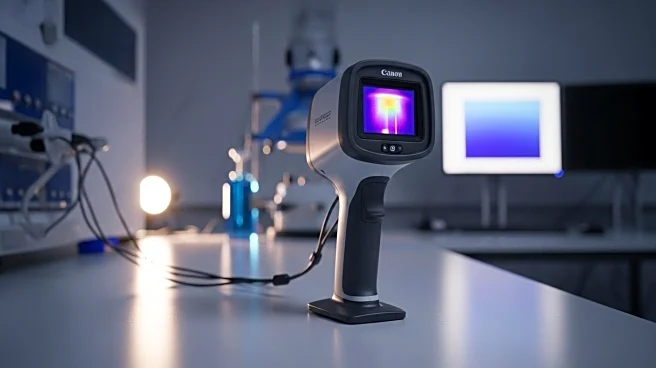What's Happening?
Researchers at the University of Sussex are utilizing thermal cameras to study stress levels and recovery in individuals. The study involves participants undergoing stress tests, such as impromptu speeches and mental arithmetic, while their facial blood flow is monitored. A notable finding is the 'nasal dip,' where the temperature of the nose drops due to stress-induced blood flow changes. This method is considered a potential breakthrough in stress research, offering a non-invasive way to measure stress responses and recovery times. The research aims to identify markers for anxiety and depression and could be applied to monitor stress in non-verbal populations, including infants and animals.
Why It's Important?
The use of thermal imaging to measure stress responses could revolutionize how stress is monitored and managed. By providing an objective measure of stress recovery, this technique could help identify individuals at risk of anxiety or depression, allowing for early intervention. Additionally, its non-invasive nature makes it suitable for use in vulnerable populations, such as infants or individuals unable to communicate verbally. The research also extends to non-human primates, potentially improving the welfare of rescued animals in sanctuaries. This approach could lead to better stress management strategies in both humans and animals, enhancing overall wellbeing.
What's Next?
The researchers plan to demonstrate this thermal stress-measuring method at the New Scientist Live event in London. They are also developing its application in great ape sanctuaries to improve animal welfare. Future studies may explore the use of thermal imaging in clinical settings to assess stress-related disorders and develop personalized stress management plans. The technique's potential to identify slow recovery from stress as a risk marker for mental health issues could lead to new diagnostic tools and therapeutic approaches.
Beyond the Headlines
The ethical implications of using thermal imaging in stress research include considerations of privacy and consent, especially in vulnerable populations. The technique's ability to measure stress in non-human primates highlights the interconnectedness of human and animal welfare, suggesting a broader application of human mental health research to improve animal care. Long-term, this research could shift cultural perceptions of stress management, emphasizing the importance of monitoring physiological responses to stress.











